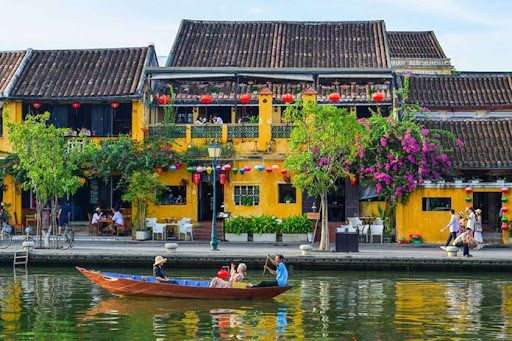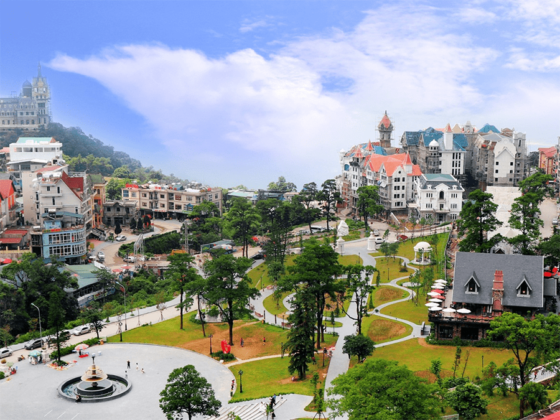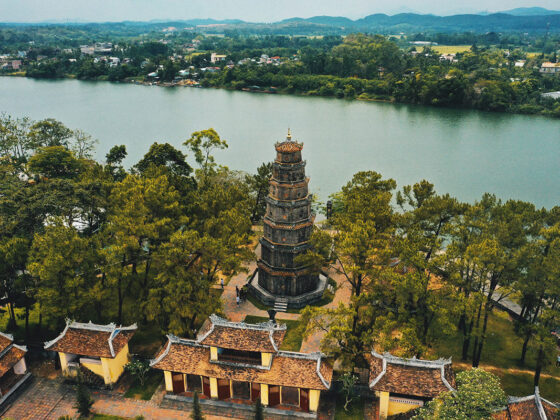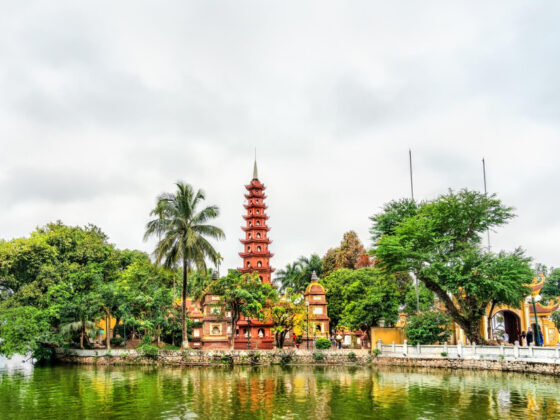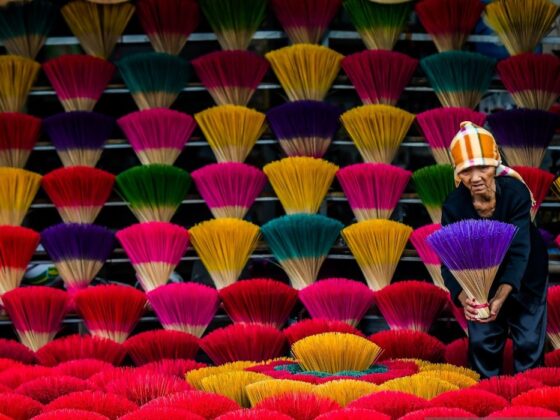Table of Contents Show
✍️ AI is summarizing:
Vietnam is a country rich in history and culture, offering an array of experiences for travellers. While many flock to popular destinations, hidden gems await those who venture deeper. One such treasure is Hoi An Old Town, a UNESCO World Heritage site that showcases its unique architectural heritage and vibrant trading history.
Read more interesting posts:
- A Guide to the Hoi An Lantern Festival: Dates, Tips & What to Expect
- Uncovering the Culinary Treasures of Hoi An Market
- Vietnam Sustainable Tourism: Balancing Growth and Preservation
Discover the unique architecture of Hoi An Old Town

Nestled along the Thu Bon River, Hoi An Old Town is a UNESCO World Heritage site that feels like a step back in time. This enchanting destination is famous for its well-preserved ancient town, a testament to its role as a bustling trading port from the 15th to the 19th century. As you wander its lantern-lit streets, you’ll discover a captivating blend of history, culture, and architecture that makes it one of Vietnam’s most treasured destinations.
The blend of different architectural styles—Vietnamese, Chinese, Japanese, and European—creates a captivating atmosphere that reflects the town’s rich history. As you wander through the narrow, lantern-lit streets of Hoi An Old Town, you’ll encounter a myriad of architectural gems. One of the most iconic structures is the Japanese Covered Bridge, a beautiful wooden bridge adorned with intricate carvings. Built in the 18th century, this bridge not only connects two parts of the town but also serves as a symbol of its multicultural past.
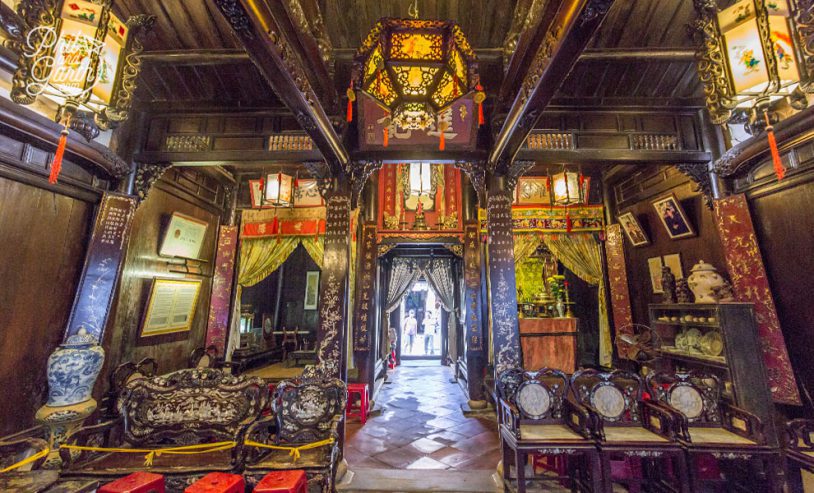
Nearby, you can explore the Tan Ky House, a well-preserved merchant residence that dates back to the 18th century. This ancient house offers a glimpse into the life of a wealthy merchant family, showcasing the blend of architectural styles that characterize Hoi An Old Town. Inside, you’ll find a fascinating collection of artifacts and traditional furniture that have been passed down through generations.
Explore the historic assembly halls in Hoi An Old Town
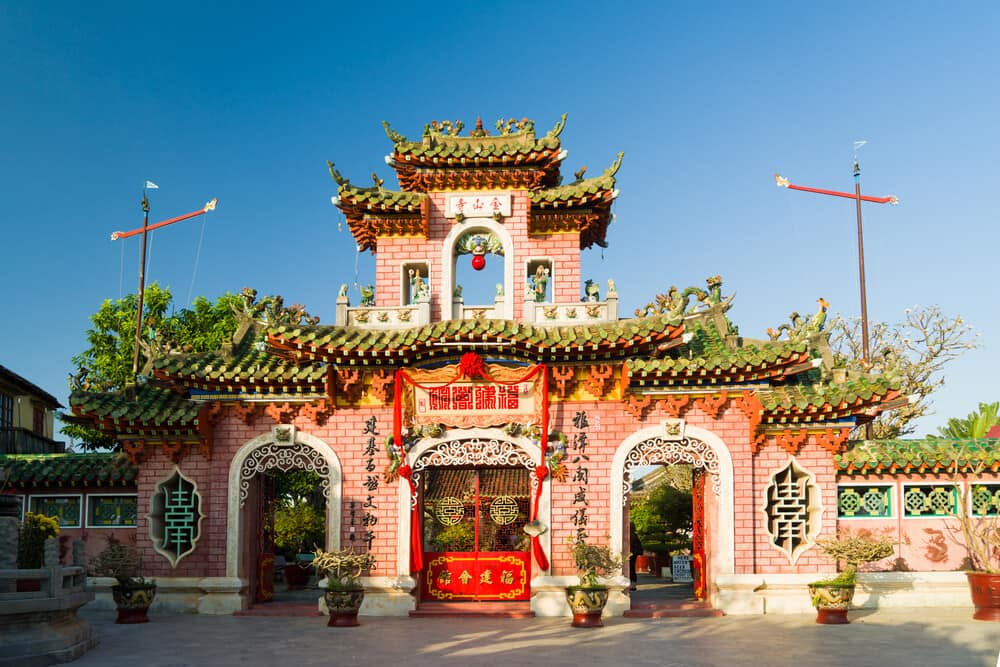
Another essential experience is visiting the Phuc Kien Assembly Hall, a stunning temple dedicated to the Chinese goddess of the sea, Thien Hau. This hall is adorned with vibrant sculptures, intricate carvings, and colourful altars, making it a visual feast. The assembly halls were not only places of worship but also served as community centres for Chinese merchants, highlighting the importance of commerce in Hoi An Old Town’s history.
Experience the living traditions of Hoi An Old Town
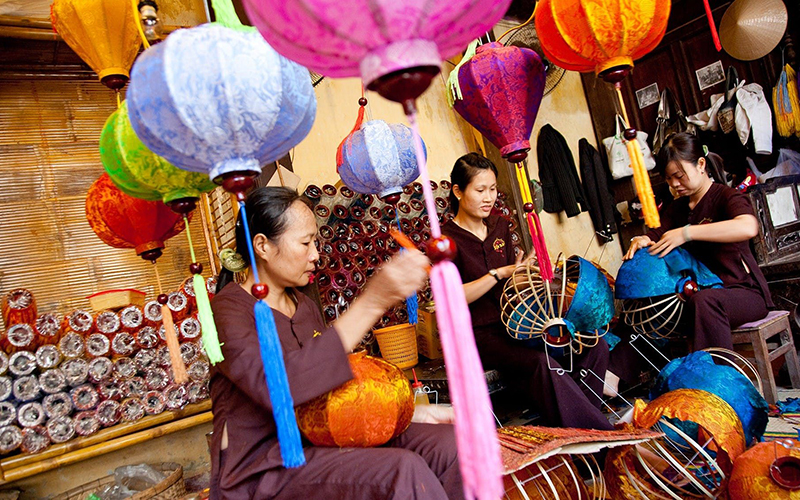
In addition to these architectural wonders, the town is home to numerous traditional shops and workshops where artisans continue to practice age-old crafts. You can witness skilled craftsmen creating silk garments, pottery, and lanterns, keeping the artistic traditions of Hoi An Old Town alive. Engaging with these artisans offers a deeper understanding of its cultural heritage.
The culinary scene in Hoi An Old Town is another reflection of its rich heritage. The town is famous for its unique dishes, such as Cao Lau and Mi Quang, which have roots in its trading history. A stroll through the bustling market reveals an array of fresh ingredients, while joining a cooking class can provide a hands-on experience of Hoi An’s distinctive cuisine.
Connect with the local community in Hoi An Old Town

Exploring Hoi An Old Town is not just about admiring the architecture; it’s also about connecting with the local community. The warm hospitality of the residents creates a welcoming atmosphere, making it easy to engage with locals and learn about their traditions. Festivals, such as the monthly Lantern Festival, provide an opportunity to witness the town come alive with music, dance, and vibrant decorations, further enriching your experience.
Conclusion
In conclusion, Hoi An Old Town is more than just a destination; it’s a living museum that offers a profound journey through time. From its iconic Japanese Covered Bridge and ancient merchant houses to its vibrant craft traditions and unique culinary scene, every corner tells a story. The magical, lantern-lit atmosphere provides an unforgettable backdrop for exploring one of Vietnam’s most cherished treasures. A visit here promises not just beautiful sights, but a deep connection to a rich and diverse heritage.
Ready to share your own adventures and connect with a community of explorers? Join our ExoTrails Facebook Group and follow the ExoTrails Fanpage for daily travel inspiration!
FAQs
What is Hoi An Old Town famous for?
Hoi An Old Town is famous for its exceptionally well-preserved ancient architecture, lantern-lit streets, skilled tailors, and unique local cuisine.
Why is Hoi An a UNESCO World Heritage site?
It is a UNESCO site because it is an outstanding example of a Southeast Asian trading port from the 15th to 19th centuries, with buildings and a street plan that reflect a blend of local and foreign influences.
What should I not miss in Hoi An?
You should not miss the Japanese Covered Bridge, the Ancient House of Tan Ky, the vibrant night market, and the experience of seeing the town illuminated by lanterns at night.
What is the best thing to do in Hoi An at night?
The best thing to do is to walk through the lantern-lit streets, take a boat ride on the Thu Bon River, and release a floating lantern for good luck.
What food is Hoi An known for?
Hoi An is known for its unique local dishes, most famously Cao Lau (a pork and noodle dish), Mi Quang (turmeric noodles), and White Rose dumplings.

